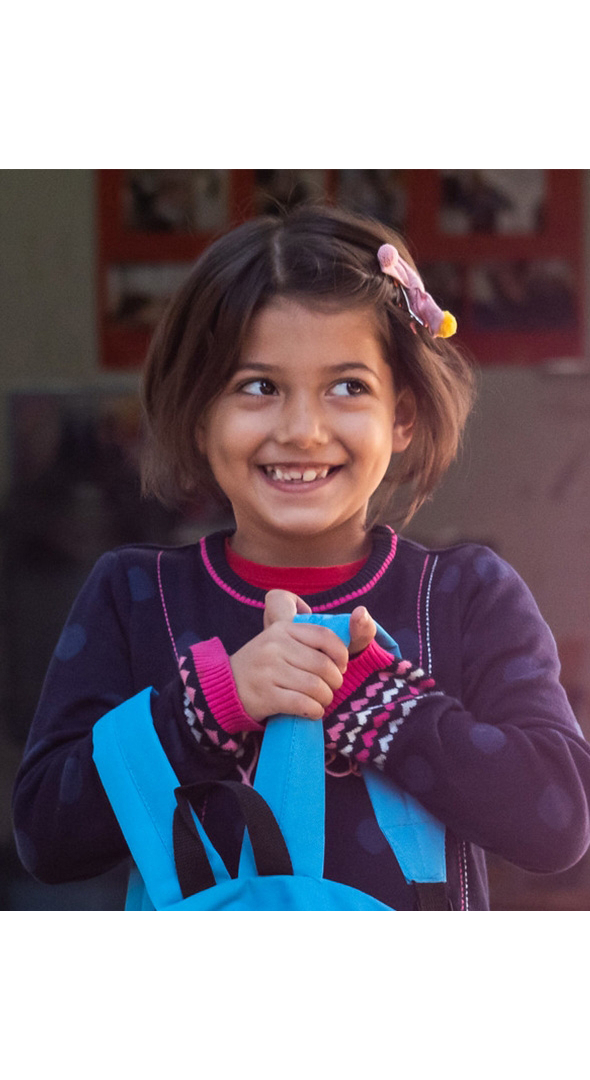1 in 5 children in rich countries lives in relative income poverty, 1 in 8 faces food insecurity
2017-06-15
© UNICEF/UNI173330/Pirozzi
Walid Mechrhale, 14, stands outside the Alkadia youth centre, in the city of Turin, Piedmont Region, Italy.
Rich countries face challenges meeting global commitments to children, new report says
FLORENCE/NEW YORK/HONG KONG, 15 June 2017 – 1 in 5 children in high-income countries lives in relative income poverty and an average of 1 in 8 faces food insecurity, according to the latest Report Card issued by the UNICEF Office of Research - Innocenti.
Building the Future: Children and the Sustainable Development Goals in Rich Countries is the first report to assess the status of children in 41 high-income countries in relation to the Sustainable Development Goals (SDGs) identified as most important for child well-being. It ranks countries based on their performance and details the challenges and opportunities that advanced economies face in achieving global commitments to children.
“Report Card 14 is a wake-up-call that even in high-income countries progress does not benefit all children,” said Sarah Cook, Director of UNICEF Innocenti. “Higher incomes do not automatically lead to improved outcomes for all children, and may indeed deepen inequalities. Governments in all countries need to take action to ensure the gaps are reduced and progress is made to reach the SDGs for children.”
Key results on selected SDG indicators for children and adolescents in rich countries include:
• End poverty: On average 1 in 5 children in high-income countries lives in relative income poverty, though there is wide variation, from 1 in 10 in Denmark, Iceland and Norway to 1 in 3 in Israel and Romania.
• End hunger: An average of 1 in 8 children in high-income countries faces food insecurity, rising to 1 in 5 in the United Kingdom and the United States, and to 1 in 3 in Mexico and Turkey.
• Ensure healthy lives: Neonatal mortality has dramatically fallen in most countries; and rates of adolescent suicide, teenage births and drunkenness are declining. However, 1 in 4 adolescents reports two or more mental health issues more than once a week.
• Ensure quality education: Even in the best-performing countries, including Japan and Finland, around one fifth of 15-year-olds do not reach minimum proficiency levels in reading, mathematics and science.
• Achieve gender equality: On average, 14 per cent of adults surveyed in 17 rich countries believe that boys deserve preference for university education, and in the majority of these countries the belief is higher among males.
In ranking 41 countries, the league table reads well for those countries that frequently appear at the top of recent comparisons of human and child development – the Nordic countries, Germany and Switzerland – and less well for lower-income countries in the group, such as Romania, Bulgaria and Chile. However, a closer look reveals room for improvement across the board as all countries rank in the mid- or bottom-third on two or more goals.
For some indicators – income inequality, adolescent self-reported mental health and obesity – the trends suggest cause for concern in a majority of rich countries. In 2 out of 3 countries studied, the poorest households with children are now further behind the average than they were in 2008. The rate of obesity among 11–15 year olds and the rate of adolescents reporting two or more mental health problems a week is increasing in the majority of countries.
Although many countries have seen oad progress in a number of indicators, there are still wide gaps between them in other areas. National income levels fail to explain all of these differences: for example, Slovenia is far ahead of much wealthier countries on many indicators, while the United States ranks 37 out of 41 in the summary league table.
Based on the results presented in Report Card 14, UNICEF calls for high-income countries to take action in five key areas:
• Put children at the heart of equitable and sustainable progress – Improving the well-being of all children today is essential for achieving both equity and sustainability.
• Leave no child behind – National averages often conceal extreme inequalities and the severe disadvantage of groups at the bottom of the scale.
• Improve the collection of comparable data – in particular on violence against children, early childhood development, migration and gender.
• Use the rankings to help tailor policy responses to national contexts – No country does well on all indicators of well-being for children and all countries face challenges in achieving at least some child-focused SDG targets.
• Honour the commitment to global sustainable development – The overarching SDG framework engages all countries in a global endeavour.









